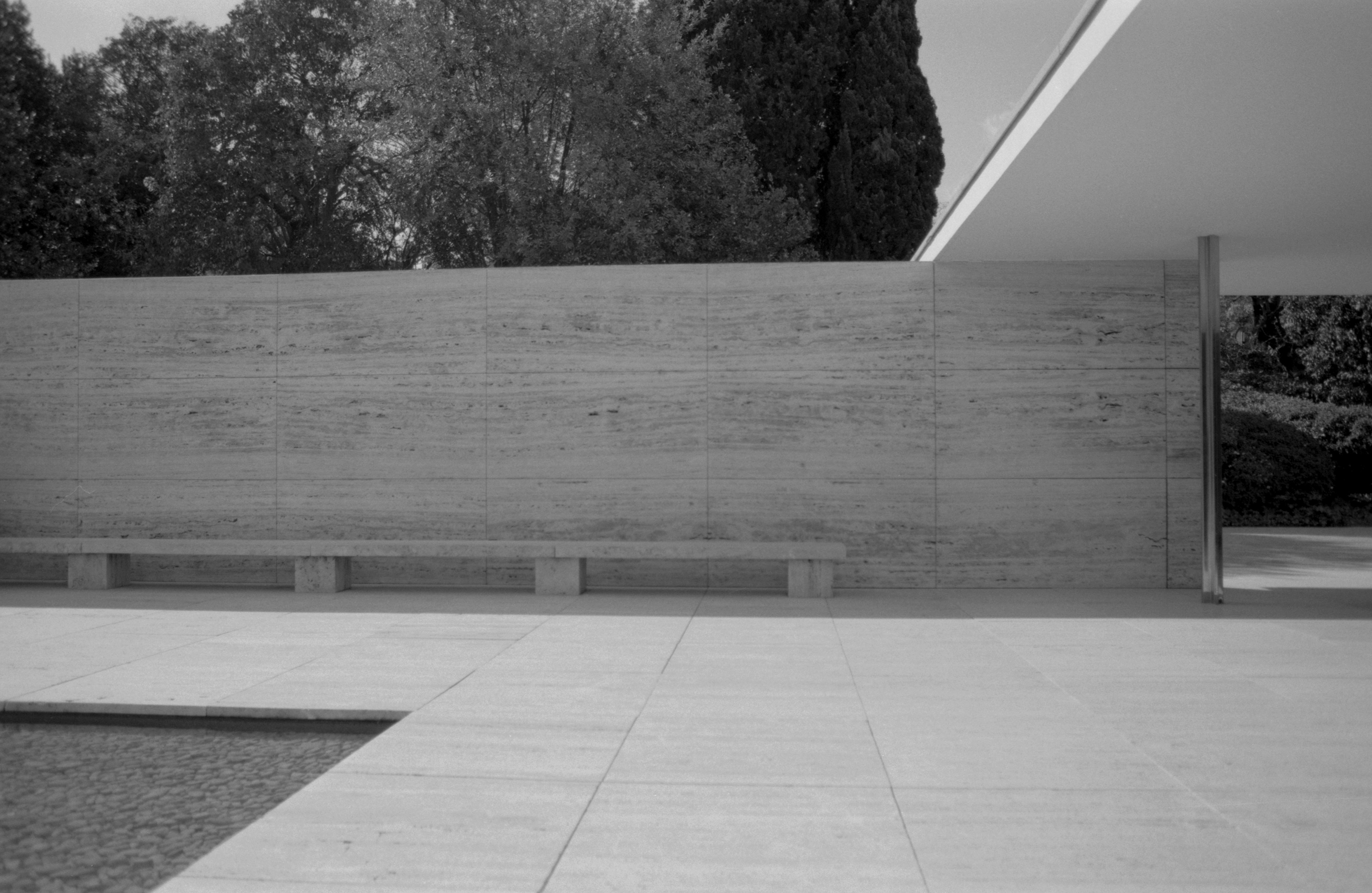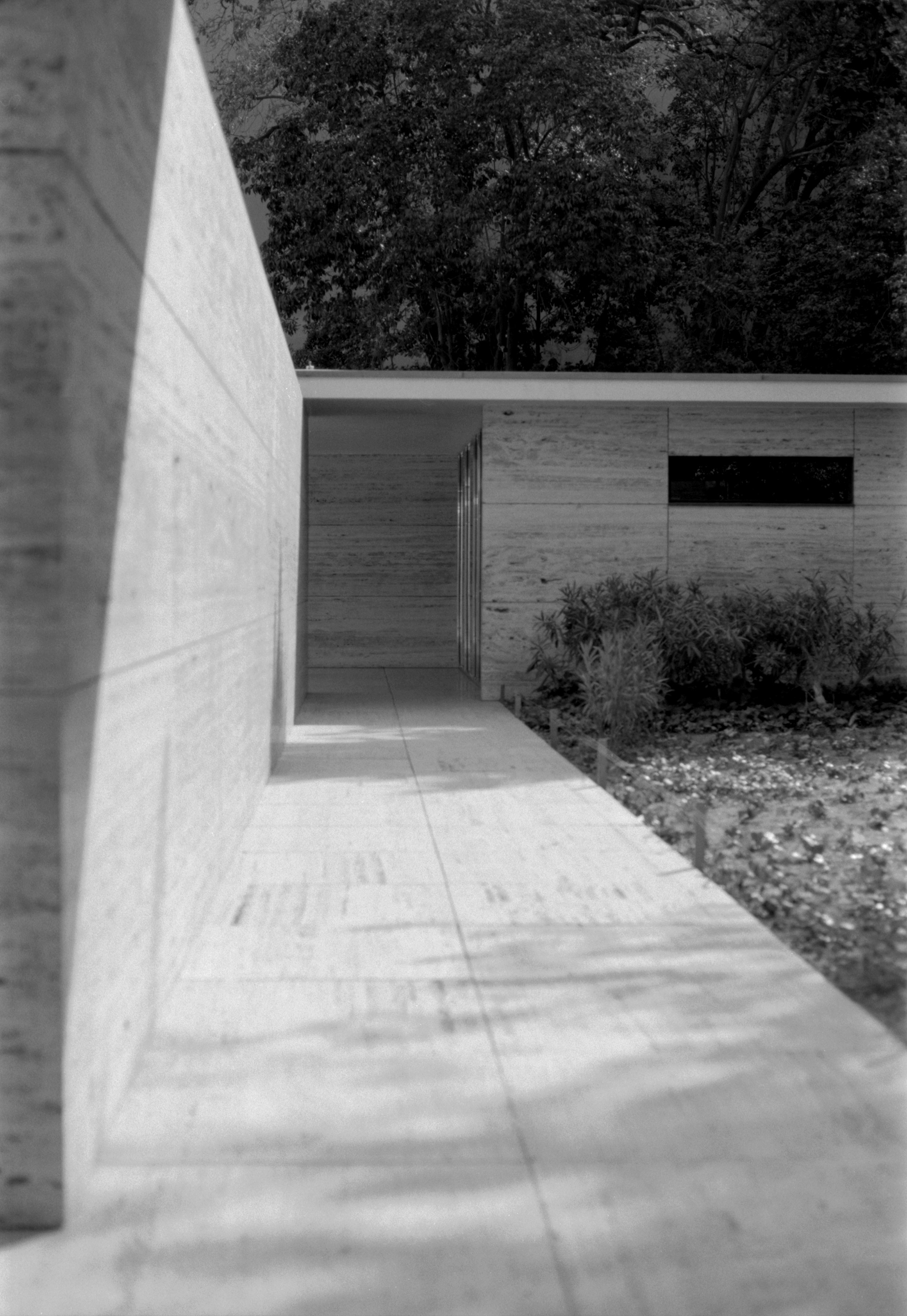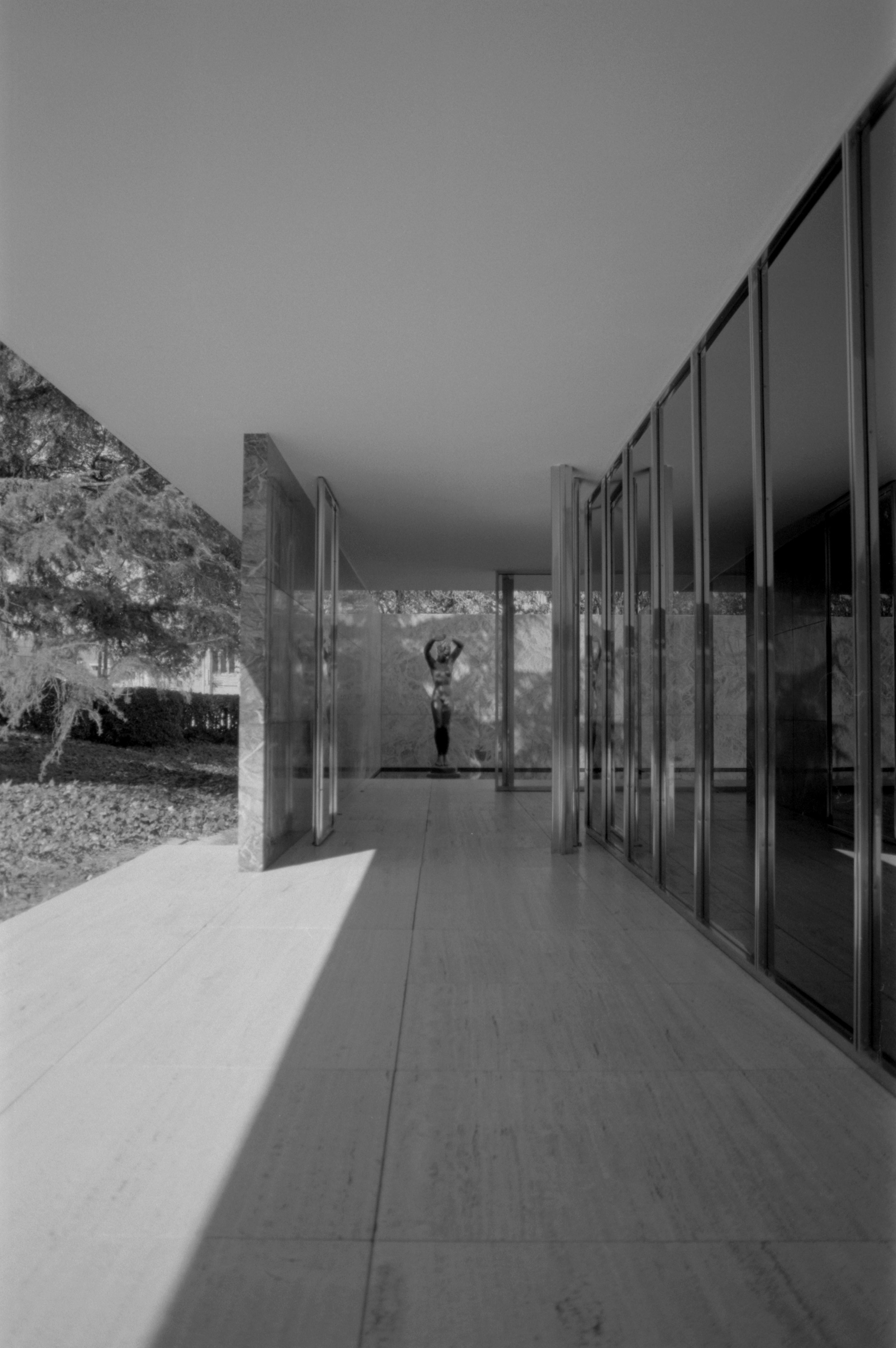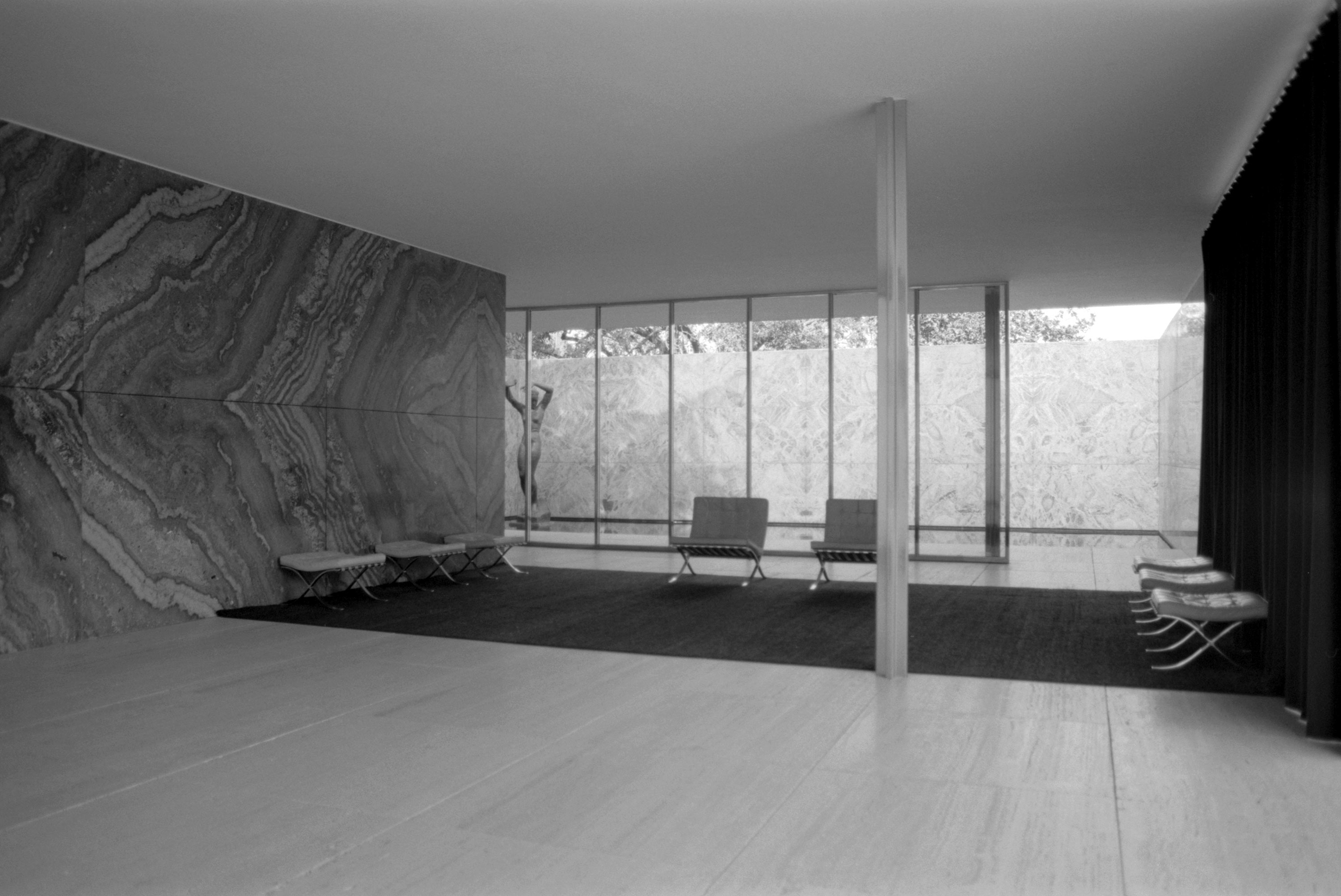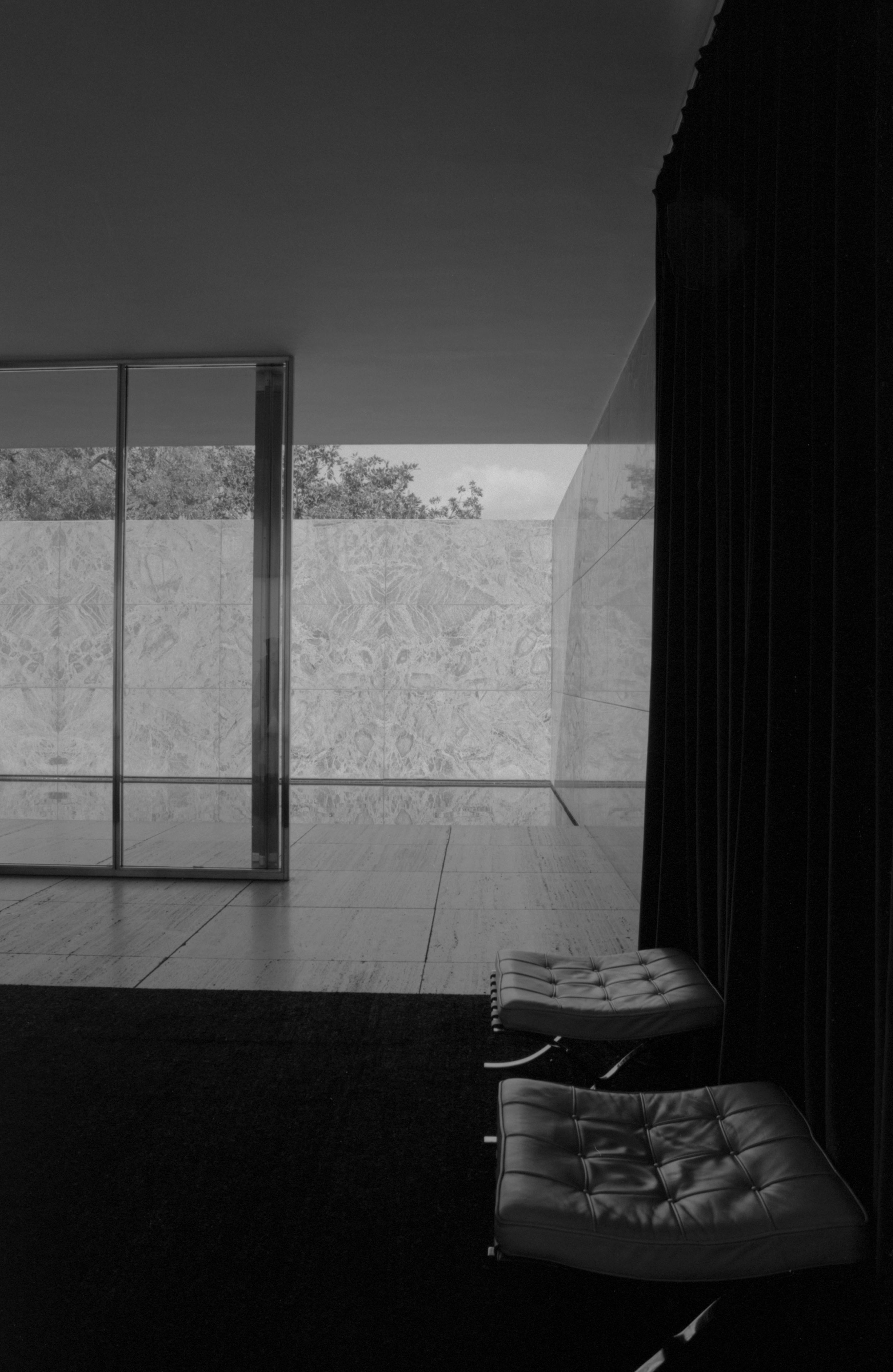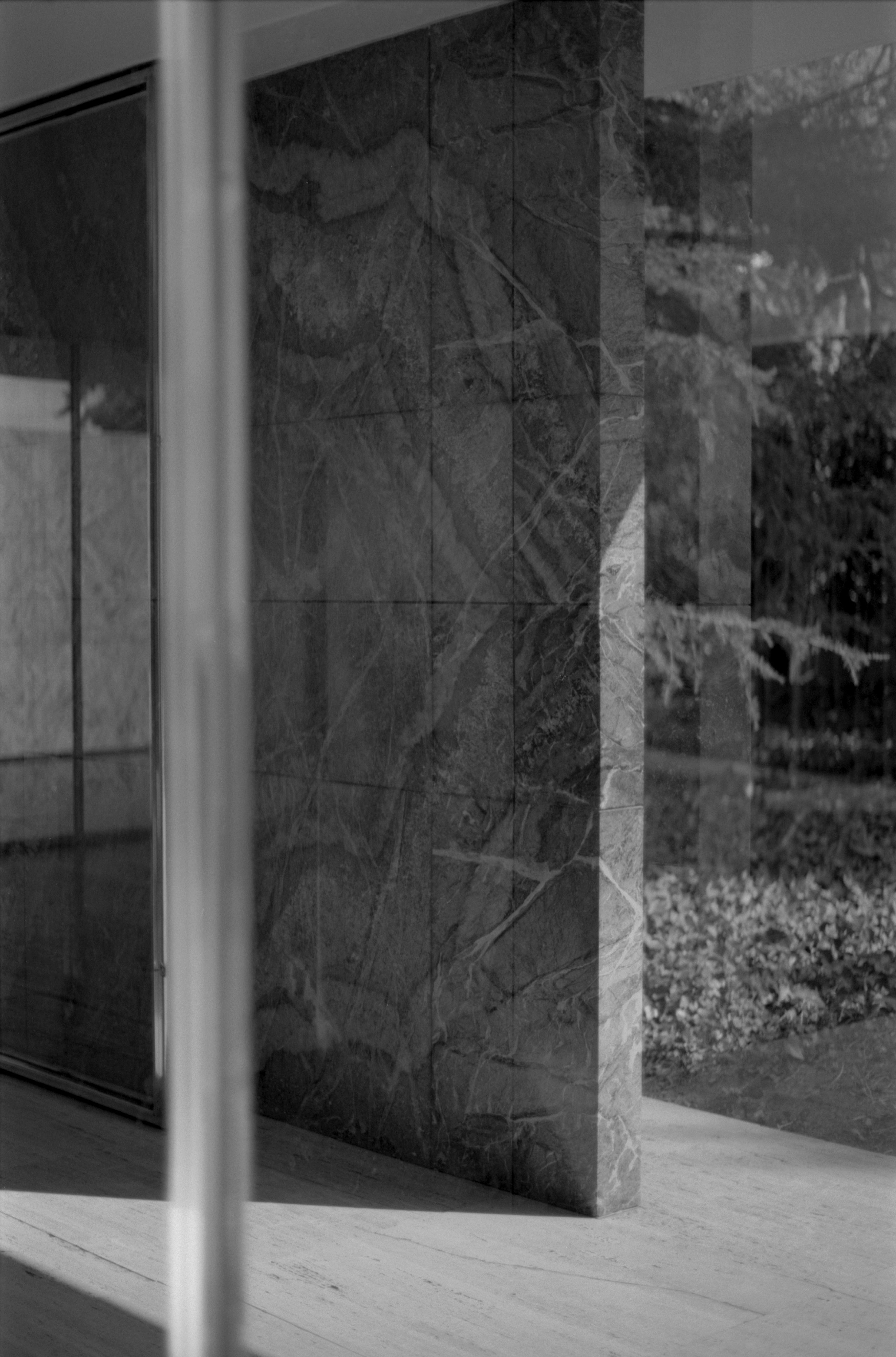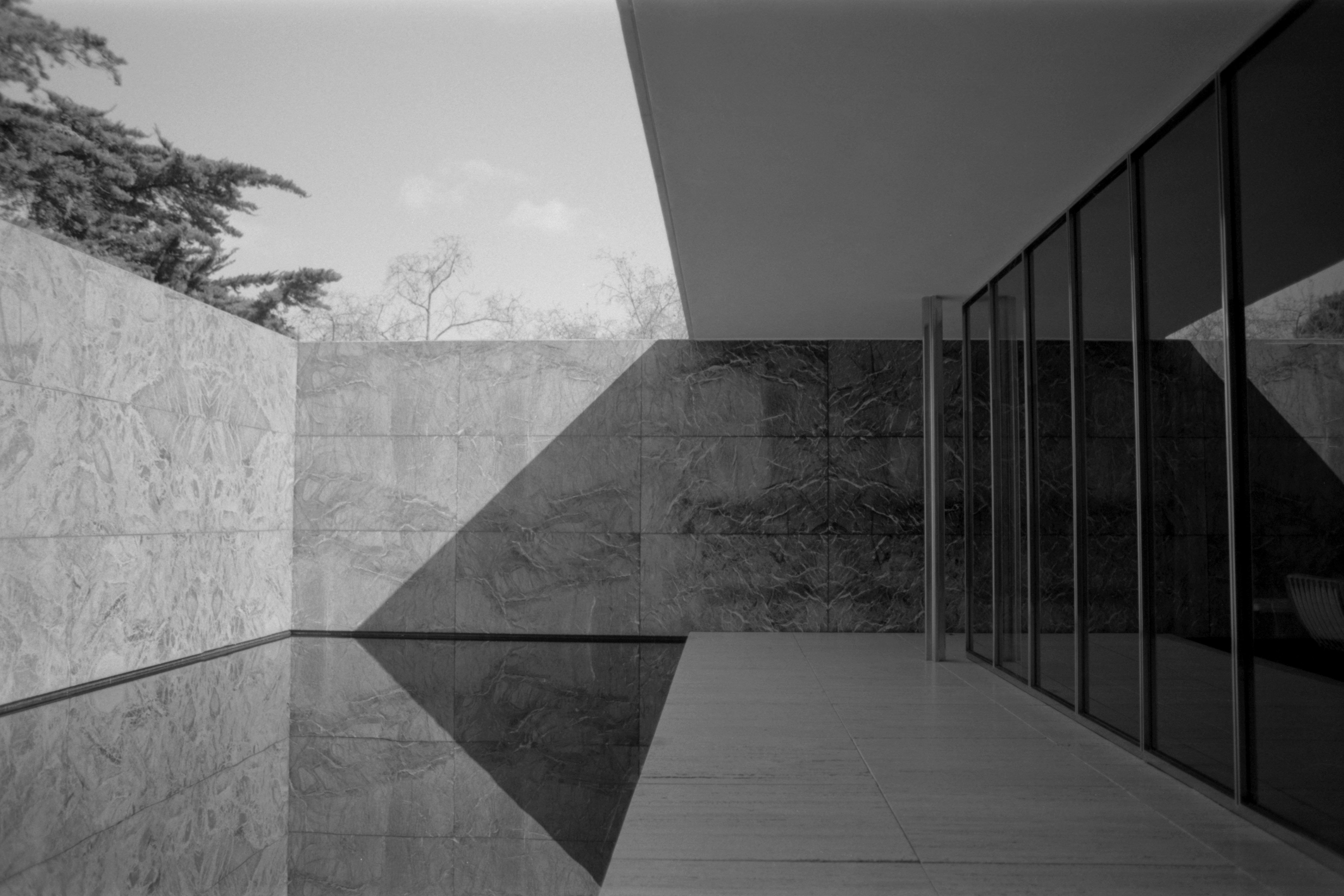Constructive Logic
THE BARCELONA PAVILION
by Mies van der Rohe
It is considered a prime example of Ludwig Mies van der Rohe’s flowing spaces and is one of the German-born architect’s most famous buildings: the Barcelona Pavilion. Although the name seems almost misleading. In fact, the structure was Germany’s exhibition pavilion at the 1929 World’s Fair in Barcelona. After the exhibition, the pavilion was dismantled and finally rebuilt in its original place between 1983 and 1986.
Barcelona Pavilion, 1929 and 1983-86
Architect: Mies van der Rohe
Shot on location in
Barcelona, Spain
Less is more, the basic principle of the Bauhaus, plays a leading role in this case. The pavilion impresses with clear lines and simple shapes. A reinforced concrete roof supported by filigree chrome-plated steel columns, ceiling-to-floor windows, and a variety of stone and marble are characteristic and style-defining.
Four segments can be identified on the building: the main part, an administrative area, an open area, and the southern atrium. The flowing spatial transitions as well as the reflections of the water embody the idea of freedom and progress of the young German republic of its time.
Less is more, the basic principle of the Bauhaus, plays a leading role in this case. The pavilion impresses with clear lines and simple shapes.
Van der Rohe realized two fundamental concepts in his groundbreaking building. He released the building from the limitations of load-bearing walls on the inside. Instead, the exterior walls and columns take over the carrying function here. On the other side is the spatial principle of the open floor plan as a single coherent space.
Individual conventional room functions are not strictly separated from each other in the various rooms. Everything merges smoothly into each other. Different floor coverings, such as a carpet, colors and also light act as separating elements. Core principles that can also be found in the Villa Tugendhat, built at the same time, and also in the Farnsworth House near Chicago, designed twenty years later.
In addition to the building itself, another icon of modernism can be found here: the Barcelona Chair, which was designed just for the complex. Together with interior designer Lilly Reich, van der Rohe created a piece of furniture that was clearly ahead of its time. Intersecting steel profiles elegantly grip a leather seating surface. A groundbreaking design and completely new for the time. A design that has been in serial production since 1948 by Knoll International and can be found today in many office complexes and public buildings.
